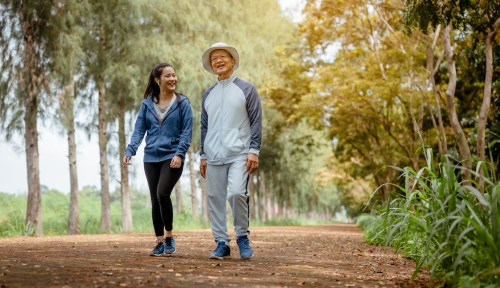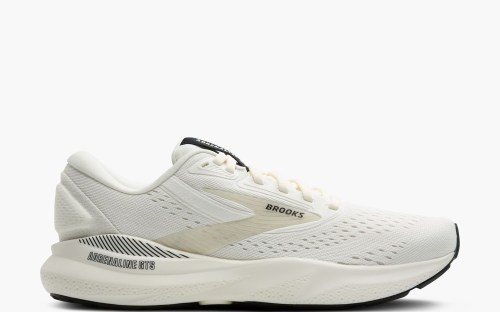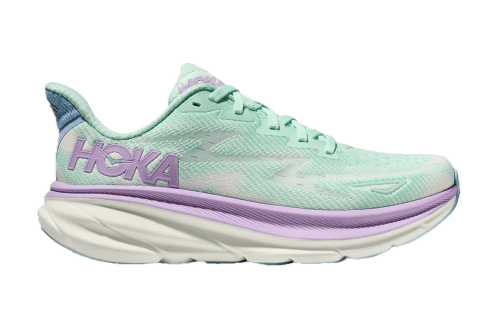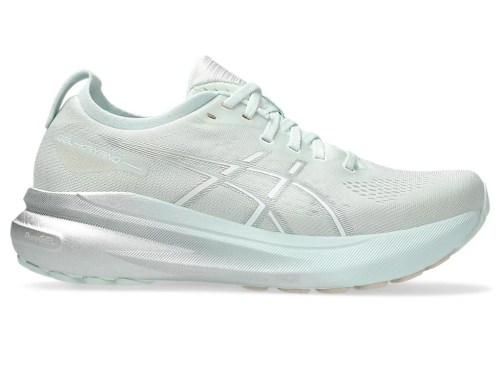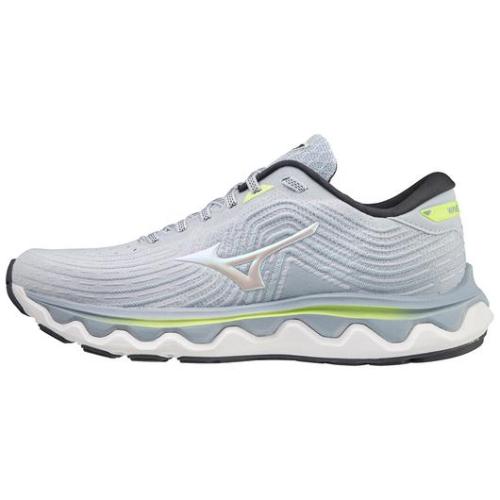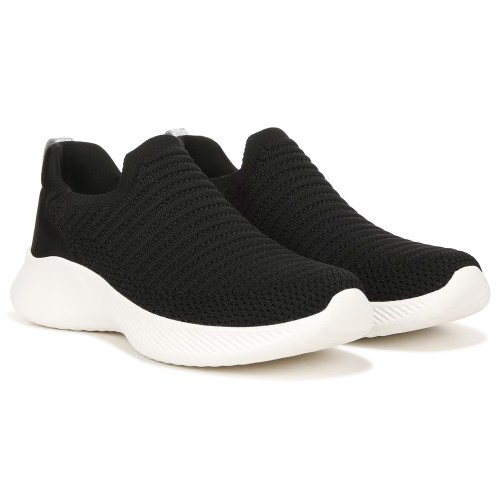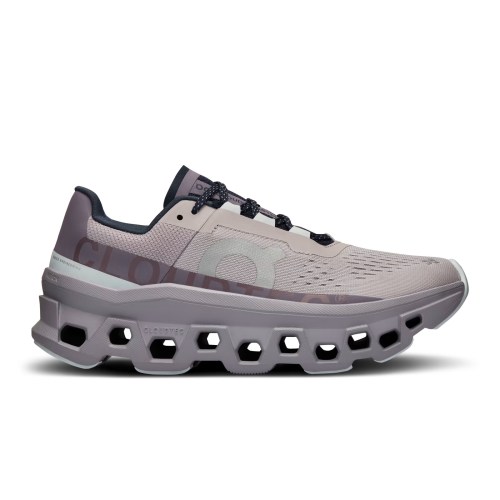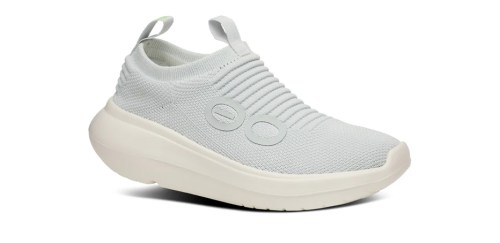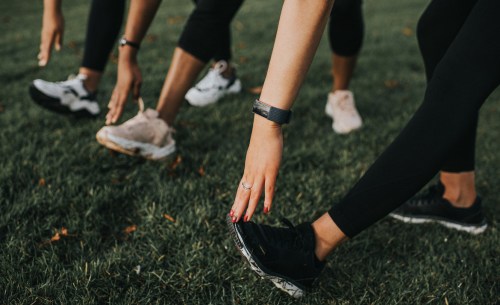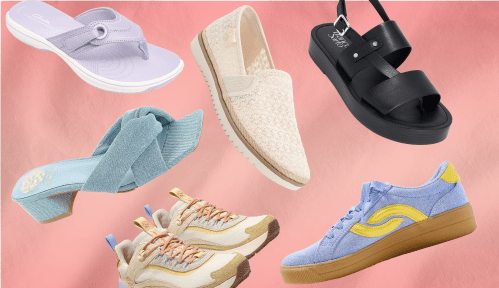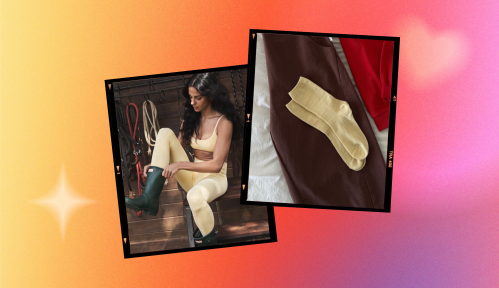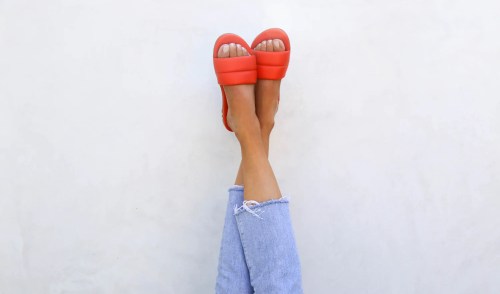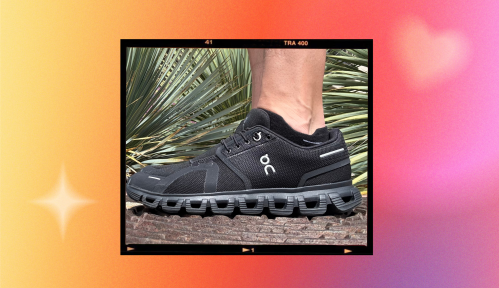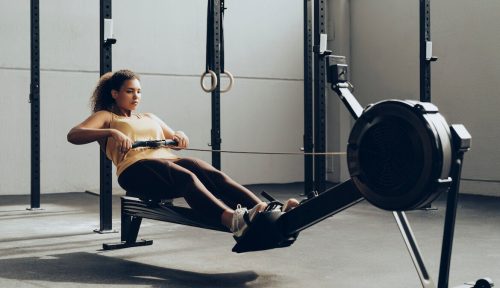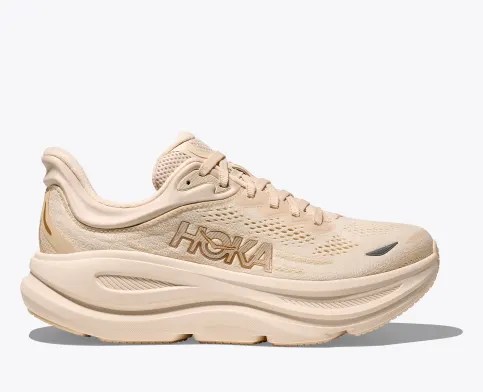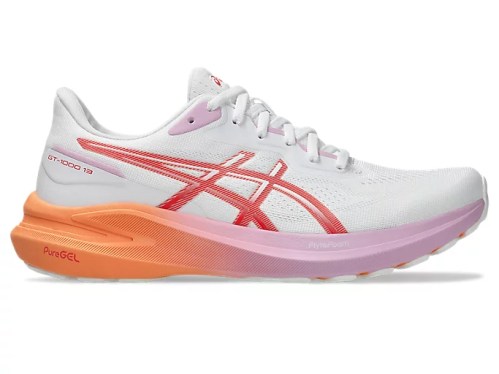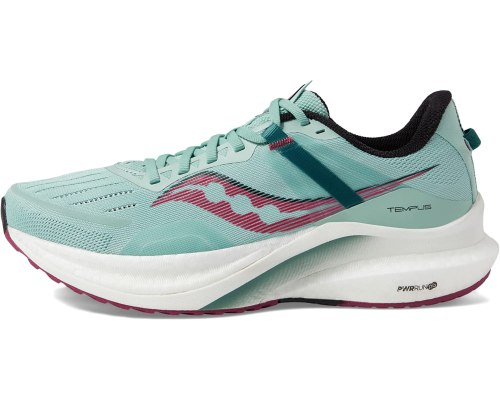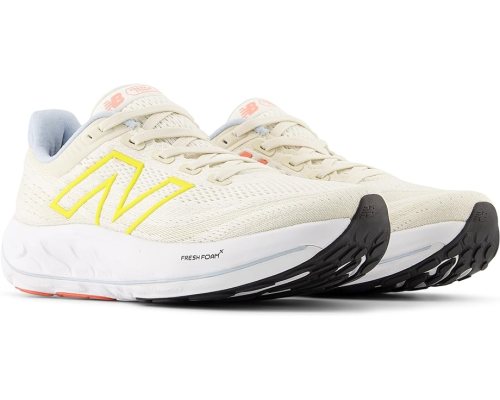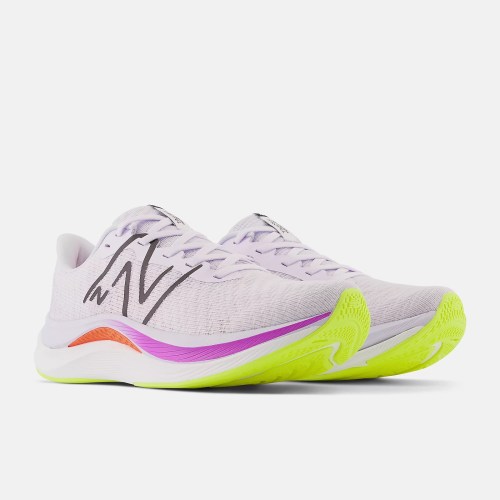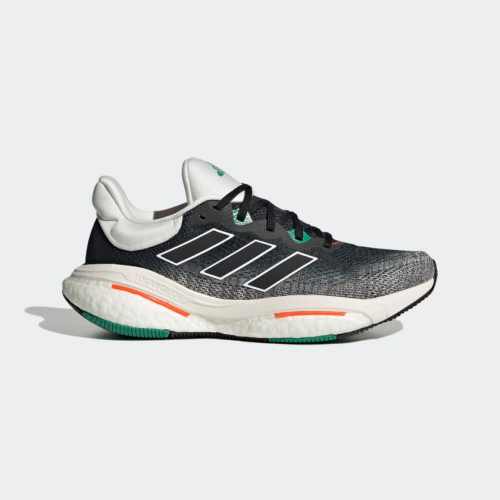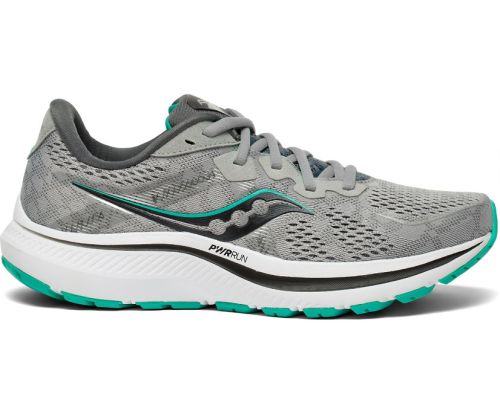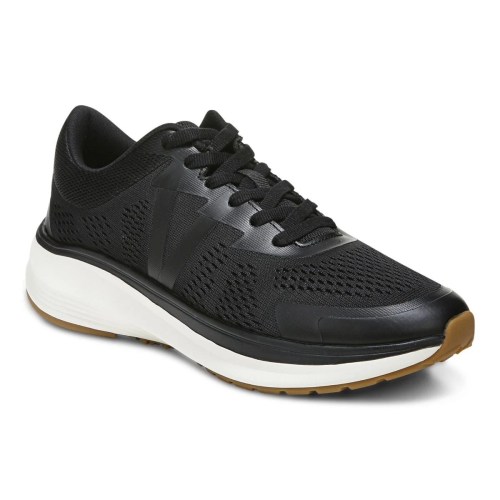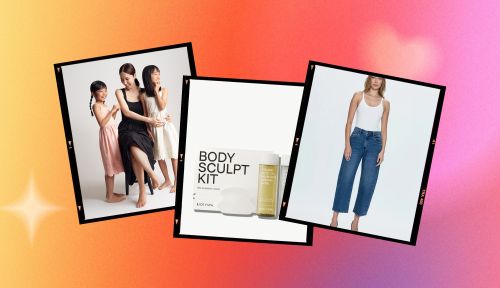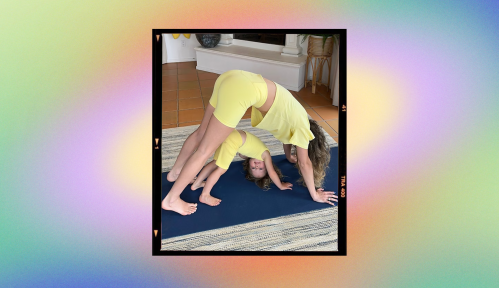Our editors independently select these products. Making a purchase through our links may earn Well+Good a commission
You know, we don’t really give our knees enough credit until they start acting up. Considering how much we use them for just about every physical activity, achy knees or the occasional click and crack can quickly become a nuisance. Luckily, sneakers for knee pain are especially helpful at alleviating joint and mobility issues from the ground up—and we’ve found just the ones.
Experts in This Article
board-certified podiatrist and founder of Step Up Footcare in New York City
podiatrist at Broadway Chiropractic and Wellness Center
If your knees need some TLC—or if you want to prevent them from needing it in the first place—you’ve come to the right spot. We spoke with podiatrists to learn what to look for in the best sneakers for knee pain, then set out to find some of the most supportive and well-cushioned pairs on the market today. Time to put away your flat, strappy sandals and wobbly heels and grab one of these sneaks your knees will thank you for.
Best sneakers for knee pain, at a glance
- Best overall: Brooks Adrenaline GTS 24, $140
- Best for walking: Hoka Clifton 9, $145
- Best for running: Asics Gel Kayano 31, $165
- Best stability: Mizuno Wave Horizon 6, $170
- Best slip-on: Naturalizer Elite, $100
- Best shock absorbing: On Cloudmonster, $170
- Best recovery shoe: OOFOS OOmy Zen, $160
- Best max cushioning: Hoka Bondi 9, $170
- Best for overpronators: Asics GT 1000 13, $110
- Best fit: Saucony Tempus, $160
- Best lightweight: New Balance Fresh Foam X Vongo v6, $165
- Best for motion control: Brooks Ariel GTS 24, $160
- Best for speed: New Balance FuelCell Propel v4, $110
- Best traction: Adidas, Solarglide 6, $160
- Best with a wide toe box: Saucony Omni 20, $90
- Best arch support: Vionic Limitless Sneaker, $135
What causes knee pain?
While knee pain can be caused by injury or age, there’s one culprit you may not automatically think of: your feet. “When it comes to joint pain, we love to blame it on age, but do we ever stop to think where it stems from?” says Stephanie Anne Lubin, DPM, a podiatrist at Toetal Podiatry in New York City. “One of the most common areas to experience pain is our knees. Contrary to what most people think, it may not be the knees getting old, but rather the orientation of your feet.”
Nelya Lobkova, DPM, a board-certified podiatrist and founder of Step Up Footcare in New York City, adds that knee pain is often caused by alignment issues stemming from our foundation, the feet. “If the feet are not transferring ground reaction forces properly up the chain, alignment is thrown off, and knee concerns arise.”
Sometimes alignment issues are caused by the fact that the left and right lower limbs are different lengths, and as the body adjusts to this over time, it has negative effects on the lower body joints. To address knee pain, you need to make sure it is properly diagnosed and alignment issues are ruled out. If there are alignment problems, the main solution involves proper sneakers and custom orthotics to align the body. (And luckily, you’re in the right place for that!)
Can wearing the right sneakers alleviate knee pain?
Wearing the wrong shoe can aggravate alignment issues and make knee pain worse, says Dr. Lobkova. She advises avoiding rocker bottom sneakers (sneakers with midfoot rockers such as Hoka—they’re great for a lot of reasons, but not for folks who experience knee pain) as they put excess pressure on the knees in order to relieve pressure from the ball of the foot. Also, stay away from sneakers with very high heel-to-toe drops (above 10mm). “An elevated heel in a sneaker increases stress on the knees, thus worsening underlying alignment concerns,” she says.
What to look for in sneakers for knee pain
Foot type
Because your foot type can impact your knees, it’s important to look for a shoe that’s appropriate for your specific foot type. One way to determine this is the “wet foot” test, says Dr. Lubin.
To determine your arch type, wet the soles of your feet and step on a sheet of paper, creating a footprint. If the wet print reveals the entire bottom of your foot, you likely have a low or flat arch, indicating overpronation. If about half of the middle section of your arch is visible, you probably have medium arches, considered a neutral foot type. A wet print showing only the imprint of your toes, heel, and the ball of your foot suggests a very high arch, known as supination. (Here’s a good visual for how to do it if you need it.)
Motion control
A “motion control” sneaker incorporates the most amount of midsole support, says Dr. Lobkova. “When the midsole is the most rigid or supportive, it allows for the least amount of improper tilting of the heel during walking and running. Less abnormal tilting of the heel means less abnormal rotation of the knee since the mechanics start from the ground up.”
Cushioned midsole
A cushioned midsole involves a platform sole, says Dr. Lobkova. “Look for platform sneakers with adequate shock absorption or cushioning under the heel. When there is not enough shock absorption, the forces travel to the next weight-bearing areas up the kinetic chain, which is the shins or the knees,” she says. If you have inadequate shock absorption in your sneakers, it commonly leads to shin splints or knee pain.
Arch stability
Sneakers for knee pain should have arch stability and a strong structure to support the foot during impact. “The sneaker should not be able to bend in half or twist 180 degrees,” says Dr. Lubin. If you do think you’ll need a little more support, check out these sneakers with arch support.
Cushion
The amount of cushion you’ll want will come down to personal preference and the type of activities you like to do. Folks who spend all day on their feet may want more cushioning, while others may prefer to feel more stable and grounded. Weight lifters will want less cushioning, while Zumba-lovers will want more.
Style
Don’t discount your personal style while shopping—sneakers for knee pain don’t have to be boring! Plenty of brands on our list—especially Hoka and Brooks—offer a wide variety of colors for each of their shoes.
Returns
Comfort is subjective, especially if you’re dealing with knee pain. The most highly-rated sneaker still might not work out for you, so it’s important to check the return policy for each brand—that way, you know how much time you’ll have to try your new kicks before making a decision.
16 of the best sneakers for knee pain
Sizes: 5-12 (half, narrow, and wide sizes available) | Colors: 20 | Drop: 12mm
Supportive and lightweight, this pair from Brooks is a great option for everyday walks, runs, or longer challenges. They feature Brooks’ GuideRails technology system, which involves bumpers within the midsole around the heel to create additional stability. “The bumpers extend further on the medial side (inside of the foot) for optimal biomechanical alignment,” says Dr. Lobkova. The sole has air-injected rubber, which is flexible and light, and the upper is made with recycled materials, which brings a sustainable touch to your feet.
Pros:
- Lightweight cushion
- Bumpers help with stability
- Midsole support to minimize excess movement
Cons:
- May need to size up a half size
Sizes: 5-12 (half and wide sizes available) | Colors: 13 | Drop: 5mm
With a responsive midsole and the American Podiatric Medical Association (APMA) Seal of Acceptance, you know the Hoka Clifton sneakers are going to make your feet (and knees) feel better. The upper is mesh for breathability, and the heel crash pad helps cushion each step. The sneakers also have balanced cushioning that’s ideal for neutral feet, and an extended Achilles pull tab that makes putting them on a little easier.
Pros:
- Molded midsole for support
- Extended heel crash pad
- Comes in regular or wide sizes
Cons:
- Not everyone may want maximum cushioning
Sizes: 5-13 (half, medium, wide, and narrow sizes available) | Colors: 20+ | Drop: 10mm
If running is your game, knee pain is probably on your mind. This pair from Asics offers a "4D" stability system so you feel supported with every stride, plus a hefty boost of gel cushioning to soften the load as you run. The Gel Kayano 31 is a solid pick for distance runners, or really anyone who spends a lot of time on their feet. We especially dig this shoe's soft ankle cradle, which has a sock-like feel, and how light it is are despite the chunkier silhouette.
Pros:
- Added stability features
- Lightweight cushion
- Great for distances
- Tons of color options
Cons:
- May be too cushioned for some
Sizes: 6-12 (half sizes available, some wide sizes in certain colors) | Colors: 6 | Drop: 8mm
If you have flat feet or pronate when you walk and run, shoes with stability built in are important to keep your feet at a neutral position when you move. The Mizuno Wave shoes have cushioning and a stable platform.
“The patented Wave plate in the midsole acts as a stable buttress under the inside of the heel, similar to a post on the bottom of an orthotic,” says Dr. Lobkova. The foam wave is asymmetrical, which helps tilt the heel and keep it in the optimal neutral position. The upper is stretch woven, and the shoe is also made with eco-friendly materials.
Pros:
- Stability support via an asymmetrical foam wave
- Breathable, woven upper
- Grippy rubber outsole
Cons:
- Not everyone may want maximum cushioning
Sizes: 5-10 (half sizes and wide sizes available) | Colors: 3
Breathable, cushiony, shock-absorbing—what more could you ask for? Naturalizer’s Elite Slip-On sneakers are light on feet and knees, thanks to the Rezorb responsive cushioning in the midsole that decreases impact from hard, unforgiving surfaces. They’re also made with the brand’s Contour+ Comfort technology for a comfy fit, no matter how long they’re on your feet. Even better, they feature sustainable materials in the upper and come packaged in eco-friendly packaging.
Pros:
- Lightweight breathable upper
- Rounded toe, back pull-tab
- Responsive midsole cushioning made with sustainable materials
Cons:
- Not as supportive a lace-up sneakers
- Run narrow
Sizes: 5-11 (half sizes available) | Colors: 6 | Drop: 6mm
This pair of sneakers may make you feel like you’re walking on a cloud. It has maximum cushioning and rebound with each step, but is still lightweight to keep up with your long runs. The cushioned sole is designed to absorb impact and provide soft landings so you can run or walk for longer and without injuries. And with their unique, futuristic style and bright color combinations, you’ll turn heads wherever you go. Dr. Lubin says these are good for overpronators.
Pros:
- Lightweight
- Made with recycled materials
- Lots of cushion but still responsive
Cons:
- Not everyone may want maximum cushioning
Sizes: 5-11 (most half sizes available) | Colors: 4
If your feet need some TLC, OOFOS is usually the right place to turn. This newer style from the beloved recovery-shoe brand is made with a breathable knit upper and a slip-on design. The outsole of the OOmy Zen sneaker has all of the springy cushioning we've come to know and love from the brand, and the insole doesn't skimp on arch support. Added bonus: this shoe is machine washable!
Pros:
- Springy cushioning
- Breathable knit material
- Machine washable
- Good arch support
Cons:
- Limited colors
- Lack of laces mean they might not be great for higher-impact activities
Sizes: 5-12 (half sizes available) | Colors: 10 | Drop: 4mm
Hoka sneakers are synonymous with max cushioning. The Hoka Bondi, another good option for overpronators, uses a soft, light foam to keep your steps soft and comfy. It has engineered mesh on top so your feet stay cool, and there’s a rear crash pad to help with balanced heel-to-forefoot transition. It also has the American Podiatric Medical Association (APMA) Seal of Acceptance, so you know your feet are in for a treat.
Pros:
- Lightweight
- Made with recycled materials
- Lots of cushion but still responsive
Cons:
- Chunky silhouette might not be for everyone
Sizes: 5-12 (half sizes available) | Colors: 11 | Drop: 8mm
Whether you’re running or walking, the Asics GT-1000 will give you softer landings under your feet. The technology on the inside provides extra support in the midsole to keep your feet stable and help reduce overpronation. The soles have lightweight foam, and there is gel technology in high-impact areas (like your heel) to help with shock absorption. The upper is mesh and breathable because no one wants hot feet while they’re on the go.
Pros:
- Neutral midsole support
- Mesh upper for breathability
Cons:
- Gel may wear out over time
- May run a half size small (those with wide feet should size up)
Sizes: 5-12 (half sizes and some wide sizes available) | Colors: 7 | Drop: 8mm
A good-fitting shoe is important not only for comfort but also for safety. The Saucony Tempus shoes have adaptive lacing and a contoured shape, as well as a padded collar and tongue, to make sure they hug your entire foot just right. The structured cushioning is lightweight and springy, letting you take each step with ease. The upper is made of a lightweight mesh for breathability, and the shoe is also APMA Certified.
Pros:
- Lightweight and responsive
- Padded collar and tongue for comfort
- Midsole support
Cons:
- Not everyone may want maximum cushioning
Sizes: 5-12 (half sizes and wide sizes available) | Colors: 5 | Drop: 8mm
The New Balance Fresh Foam has several features that all help with stability to control pronation: midsole cushioning, a medial post, an 8mm drop, and lightweight cushioning. The upper is knit with embroidery for style, support, and breathability.
Pros:
- Lightweight and responsive
- Padded collar and tongue for comfort
- Midsole support
Cons:
- Some customers say it takes time to get used to the insole
Sizes: 6-13 (half, wide, and extra wide sizes available) | Colors: 3 | Drop: 12mm
Stable and soft, the Brooks Ariel GTS 23 has smart support with the GuideRails technology to help keep extra movement under control. This helps your knees, hips, and feet so you can run with less aches and pains. The engineered mesh upper keeps air flowing while you’re moving, and the shoe has a wide toe box to give your toes plenty of room to wiggle.
Pros:
- Smart support to minimize excess movement
- Soft cushion
- Comes in regular, wide, or extra wide
Cons:
- Boxier look may not be for everyone
- Limited colors
Sizes: 5-12 (half sizes and wide sizes available) | Colors: 5 | Drop: 6mm
If you have a need for speed, consider the New Balance FuelCell Propel v4. These running shoes are comfortable and supportive, and the midsole is designed to help with propulsion so your steps stay quick. It has no-sew construction for a nice fit and mesh for breathability, which is essential when your feet are moving at high speed. Plus, they just look sleek.
Pros:
- Midsole support
- Lightweight stability
- Comes in regular or wide
Cons:
- May not be as comfortable for longer distances
Sizes: 5.5-11.5 (some half sizes available) | Colors: 6 | Drop: 10mm
These Adidas running shoes have a BOOST midsole that’s designed to provide support and cushioning, as well as return some of the energy of each step back to you. The soles cushioned and responsive to each stride, and the outsoles have traction to make sure your feet grip the ground so you can get outside in a variety of weather conditions.
Pros:
- Lightweight
- Boost midsole
- Knit upper
Cons:
- May run narrow
- Limited colors and sizes
Sizes: 5-12 (half and wide sizes available) | Colors: 9 | Drop: 8mm
The Saucony Omni 20 is the 20th version of this sneaker, and it’s a classic for a reason. The shoe is stable yet flexible and has stable cushioning, so your feet get support stride after stride. It’s partially made of recycled materials and has an extended medial post to help with body alignment to help reduce pain. The sneakers in wide and standard widths, and the engineered mesh upper provides both stretch and breathability to help on the days when you spend a lot of time on your feet.
Pros:
- Lightweight
- Stable and responsive cushioning
- Comes in regular or wide
Cons:
- Not everyone may want maximum cushioning
Sizes: 5-10 (limited half sizes) | Colors: 5 | Drop: 8mm
You’ll be able to hit mile after mile with support, thanks to these Vionic sneakers, which are designed to hug your arches, making them a great option for people with flat feet, too. They provide cushioning for walking or cross-training, and a breathable mesh upper to keep your feet cool when you’re active. The sneakers also have a reinforced heel for stability and a removable orthotic insert.
Pros:
- Responsive cushioning
- Crash pad under the heel
Cons:
- Bulkier design
- Limited colors and sizes
FAQs
Are there specific brands known for knee-supportive sneakers?
While the level of support will vary depending on the specific shoe model, podiatrists frequently recommend brands like Brooks, New Balance, Mizuno, and Asics for knee support.
How often should I replace my sneakers to maintain knee support?
Podiatrists recommend replacing your sneakers (or any shoes for that matter) as soon as you notice distinct wear and tear in the cushioning or the tread, or if you feel like they’re causing you pain. Some experts recommend changing your sneakers every six months or every 300-500 miles.
Can sneakers provide enough support for severe knee pain?
As our experts mentioned above, knee pain can often stem from our feet, so having the right footwear plays a big role in pain prevention and management. However, if you’re experiencing severe knee pain, don’t hesitate to consult with a physical therapist. Getting a professional opinion on your knee pain can help you identify the root of the problem and devise a treatment plan.
Sign up for the Well+Good SHOP Newsletter
Get exclusive deals on wellness, beauty, fitness, and food products that have been hand-picked by our editors.
Got it, you've been added to our email list.
